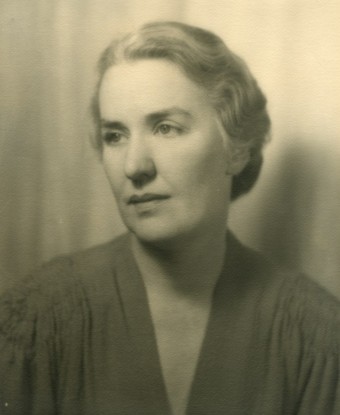Last updated: March 19, 2024
Person
Marguerite LeHand

Courtesy FDR Library
Marguerite “Missy” LeHand, was Franklin D. Roosevelt's personal secretary and confidant for more than twenty years. LeHand was born in Postdam, New York to Daniel and Mary LeHand, both the children of Irish immigrants. In her childhood, LeHand's family moved to Somerville, a working class suburb of Boston, where she was struck by rheumatic fever at age fifteen. The illness permanently damaged her heart and would lead to her eventual premature death.
LeHand studied secretarial science at Somerville High School. After holding a variety of clerical positions in the Boston area, she moved to Washington, D.C. in 1917 to serve as a clerk at the Department of the Navy during the First World War. FDR was then serving as Assistant Secretary of the Navy, but the two did not meet. Three years later, at the recommendation of Charles McCarthy, Roosevelt's assistant at the Navy Department, she became a secretary with FDR's vice presidential campaign when he ran on a ticket with James Cox against Warren Harding and Calvin Coolidge. LeHand's work on the campaign and her evident personal devotion to FDR caught the eye of the Roosevelts. In early 1921, FDR hired her as his personal secretary and she moved to New York where Roosevelt practiced law and served as Vice President of the Fidelity and Deposit Company.
In the aftermath of Roosevelt’s battle with polio, which left him partially paralyzed in 1921, LeHand became indispensable. During the following winters spent with a small party on the Larooco, FDR's houseboat, LeHand acted as hostess in Eleanor Roosevelt's absence. A reliable companion to FDR, LeHand learned to play poker, adopted his figures of speech, and enjoyed his favorite cocktails. LeHand accompanied FDR to Warm Springs, Georgia for physical therapy. And she worked with FDR to establish the first polio rehabilitation center in the country, incorporated in 1927 as the Georgia Warm Springs Foundation. That spring, LeHand suffered what she described as a heart attack, but others suspected she had suffered a mental breakdown.
One of the few people who actually encouraged FDR's return to politics, LeHand opposed his plan to run for governor of New York in 1928, fearing the interruption in his physical therapy would prevent full recovery. When he decided to run, she suffered another illness often described as a nervous breakdown. By the time FDR was elected and assumed office, LeHand resumed work and moved into the Governor's Mansion to continue her role as secretary.
When FDR became President of the United States, LeHand followed FDR to the White House, where she became the first woman to serve as a presidential secretary and, with Louis Howe, Steve Early, and Marvin McIntyre, she was the only female member of the "secretariat" that managed the West Wing. A 1933 Newsweek profile describing her as Roosevelts "super-secretary" brought her national fame. In 1934 she appeared on the cover of Time Magazine, only one of three women to receive a cover feature that year.
Lehand was a popular guest among Washington society. She was glamorous (LeHand was on Washington's best-dressed list for 1937), vivacious, and playful with her West Wing co-workers.
LeHand's importance only increased during FDR's second term. Following Louis Howe's death in 1936, she became the de facto White House Chief of Staff. She was at FDR's bedside every morning as he met with key advisors, vetted his mail, spent evenings with the president in his private study, accompanied him on weekend cruises on the presidential yachts, and as gatekeeper to the President, provided a "back door" entrance to the Oval Office. She was recognized as one of the most powerful people in FDR's administration.
The exact nature of FDR's relationship with LeHand's is debated by historians, but it is generally accepted that there was an element of romance. LeHand was romantically involved during her lifetime, most notably with William Bullitt, U.S. Ambassador to Russia and later France. Her devotion to Roosevelt was the most likely impediment to marriage. She once asked a friend, "How could anyone ever come up to FDR?"
In June 1941, LeHand collapsed at a White House dinner party and two weeks later suffered a major stroke that left her partially paralyzed with little speech function. In early 1942, she spent some weeks in her old room at the White House, but quickly deteriorated over frustration that she was no longer able to work. After an incident in which she set the bed on fire—probably while smoking—LeHand returned to her sister's home in Somerville, Massachusetts. After her departure from the White House, LeHand never saw FDR again, though he did keep in touch with letters, phone calls and sent gifts. LeHand died after another stroke in 1944.
FDR's political advisor and speechwriter Samuel Rosenman called LeHand "one of the most important people of the Roosevelt era." The president's words "she was utterly selfless in her devotion to duty" appear on LeHand's grave marker at Mount Auburn Cemetery.
